For bike enthusiasts, the collection often grows faster than the available space. If you’re nodding in agreement, constantly battling bike clutter, then ceiling bike storage might be the game-changer you need. Among various storage options, hanging your bike from the ceiling using hooks stands out as a simple, efficient, and budget-friendly solution.
This guide dives deep into the world of ceiling bike storage hooks, exploring why they are a top choice, how to choose the right ones, and addressing common concerns. We’ll also take a closer look at Park Tool’s specialized bike hooks and why they might be a worthwhile upgrade over generic hardware store options. Get ready to reclaim your space and give your bikes the organized home they deserve.
Why Choose to Hang Bikes from the Ceiling?
[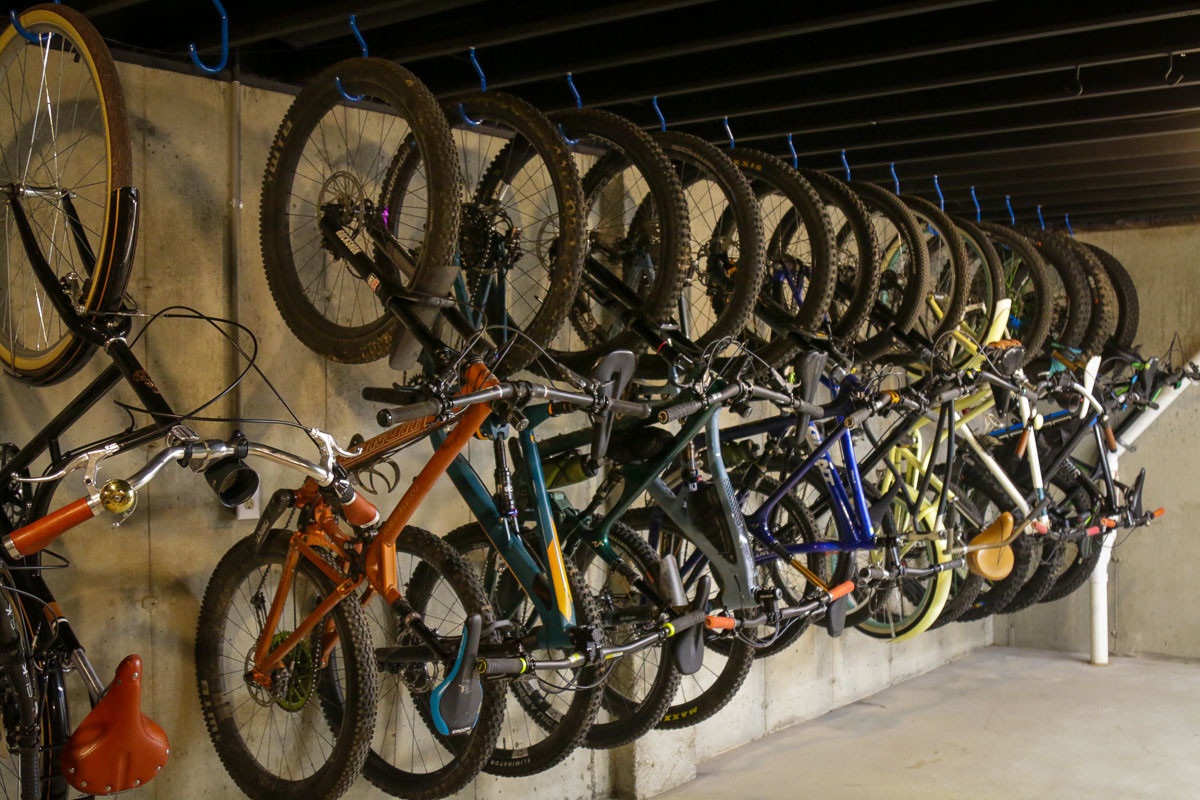 Park Tool Bicycle Storage Hooks vertical bike storage hanging](Park Tool Bicycle Storage Hooks vertical bike storage hanging)
Park Tool Bicycle Storage Hooks vertical bike storage hanging](Park Tool Bicycle Storage Hooks vertical bike storage hanging)
When space is a premium, vertical storage solutions are your best friend. Hanging bikes from the ceiling maximizes unused overhead space, freeing up valuable floor area in your garage, basement, or apartment. Beyond space-saving, ceiling bike hooks offer several compelling advantages:
- Simplicity: The design is incredibly straightforward. A hook, securely mounted to your ceiling joists, is all it takes to elevate your bike.
- Cost-Effectiveness: Compared to elaborate bike racks or storage systems, hooks are remarkably affordable. This makes it an accessible solution for cyclists on any budget.
- Versatility: Ceiling hooks can accommodate various bike types, from lightweight road bikes to sturdy mountain bikes and even fat bikes, simply by choosing the appropriate hook size.
- Ease of Installation: Setting up bike hooks is a DIY-friendly project. With basic tools and a little know-how, you can transform your storage space in a short amount of time.
If you have exposed ceiling joists in your garage or basement, you already have the perfect framework for installing bike hooks. The standard 16-inch spacing between joists is ideally suited for creating a neat row of hanging bikes.
To optimize space further, consider hanging bikes in an alternating handlebar up/handlebar down pattern. This nesting technique allows you to store bikes closer together while still maintaining easy access to each one.
[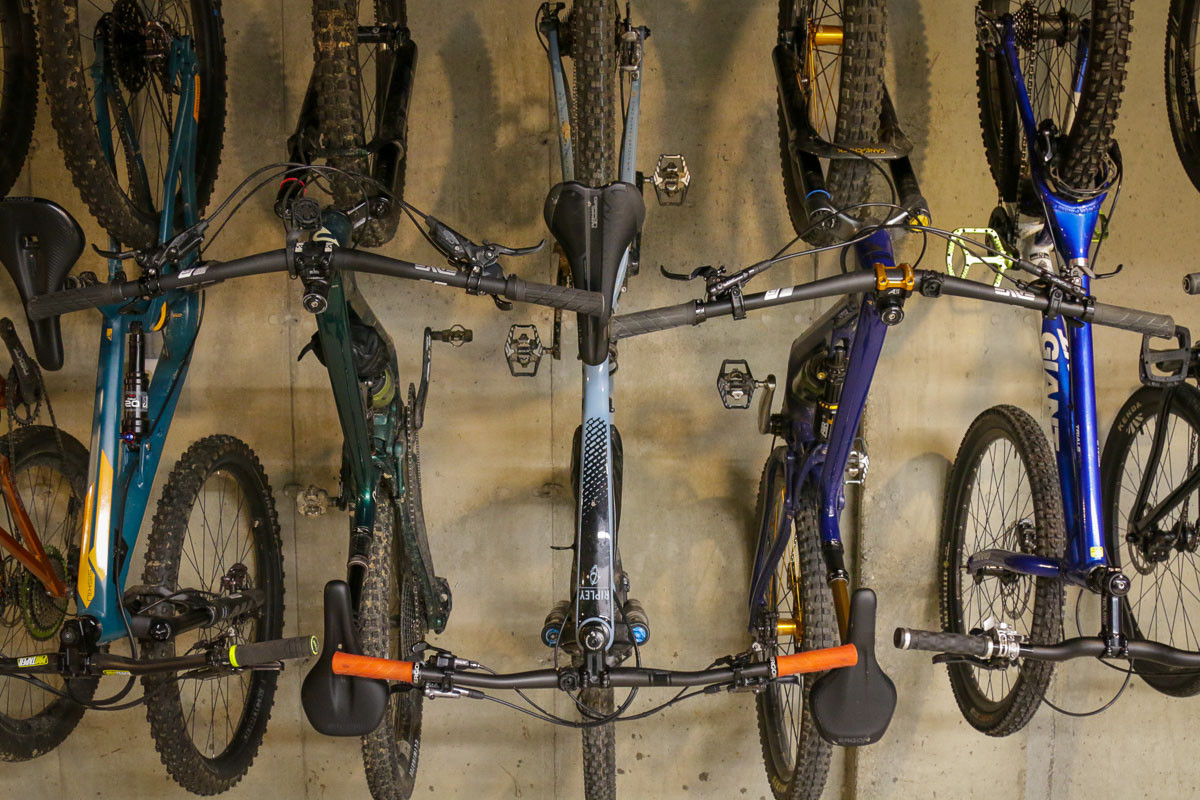 Hanging mountain bikes upside down on a storage hook](Hanging mountain bikes upside down on a storage hook)
Hanging mountain bikes upside down on a storage hook](Hanging mountain bikes upside down on a storage hook)
Even with modern mountain bikes boasting wider handlebars, the 16-inch joist spacing remains effective for ceiling hook storage. This efficient use of space is a significant advantage over floor-based racks, especially in tighter areas. While dedicated bike racks may offer higher density storage, the ease of use and accessibility can be compromised, particularly with wider mountain bike handlebars.
[ wheel base considerations with bicycle storage hooks](Wheelbase considerations with bicycle storage hooks)
wheel base considerations with bicycle storage hooks](Wheelbase considerations with bicycle storage hooks)
When planning your ceiling bike storage, remember to account for ceiling height and bike wheelbase. Bikes with longer wheelbases will require more vertical clearance when hung.
Addressing Common Concerns: Hanging Bikes Upside Down
A frequently asked question among cyclists considering ceiling hook storage is whether hanging bikes upside down by their wheels is safe. Concerns often revolve around potential damage to hydraulic disc brakes or suspension systems.
To address these concerns directly, manufacturers like SRAM, Shimano, and Hayes/Manitou have weighed in, and the consensus is reassuring: it is generally safe to hang bikes with hydraulic disc brakes and suspension upside down.
Shimano’s MTB Product Manager, Nick Murdick, explains that Shimano brakes, like other open hydraulic systems, have a reservoir designed to trap air bubbles away from the master cylinder piston. Hanging a bike may cause a small air bubble to move within the system, but it typically returns to the reservoir when the bike is returned to an upright position. Simply pulling the brake lever a few times can help the brakes self-bleed and restore optimal performance. However, it’s advisable to avoid pulling the brake lever while the bike is hanging upside down, as this could force air bubbles into the brake line.
Hayes/Manitou engineers concur, stating that there’s no inherent “right or wrong” way to hang a bike from a brake or suspension perspective. They suggest that if air is present in the brake system (indicated by spongy lever feel), hanging the bike with the front wheel up might be preferable to keep air in the reservoir. For suspension forks, some engineers even hang bikes to allow bath oil to lubricate the seals, although they note that oil migration is minimal without pressure changes.
SRAM’s response also confirms the safety of hanging bikes in either direction. Based on expert opinions, hanging bikes handlebar up is a safe practice for hydraulic disc brakes. However, as long as your brakes are properly maintained, hanging them upside down is unlikely to cause issues.
What About Carbon Rims and Ceiling Hooks?
[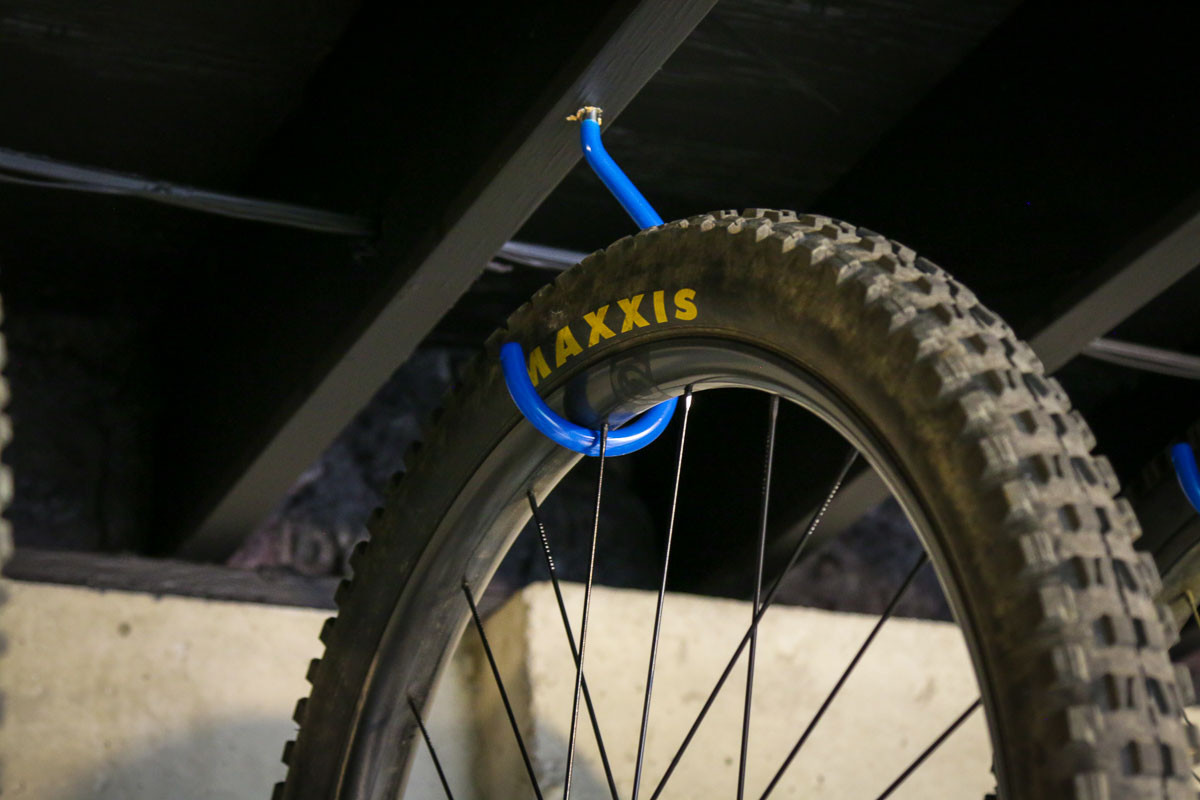 can I hang carbon wheels on bicycle storage hooks](Carbon wheels on bicycle storage hooks)
can I hang carbon wheels on bicycle storage hooks](Carbon wheels on bicycle storage hooks)
The question of carbon rim compatibility with bike hooks requires a bit more nuance. While most modern carbon wheels are robust enough for hanging, older or more fragile designs might warrant caution. In the past, some carbon wheels used a thin carbon fairing over a standard rim, making them potentially vulnerable to pressure from hooks. These rims typically felt noticeably flexible and fragile.
However, contemporary carbon wheels are generally built with greater strength and resilience. If your carbon wheels feel solid and robust, hanging them on hooks is likely safe. When in doubt, it’s always best to consult the wheel manufacturer for specific recommendations.
Regardless of rim material, it’s wise to be mindful of valve stems and rim graphics when placing your bike on a hook. Position the hook to avoid direct contact with these delicate areas to prevent damage.
Park Tool Bike Hooks: Are They Worth the Upgrade?
[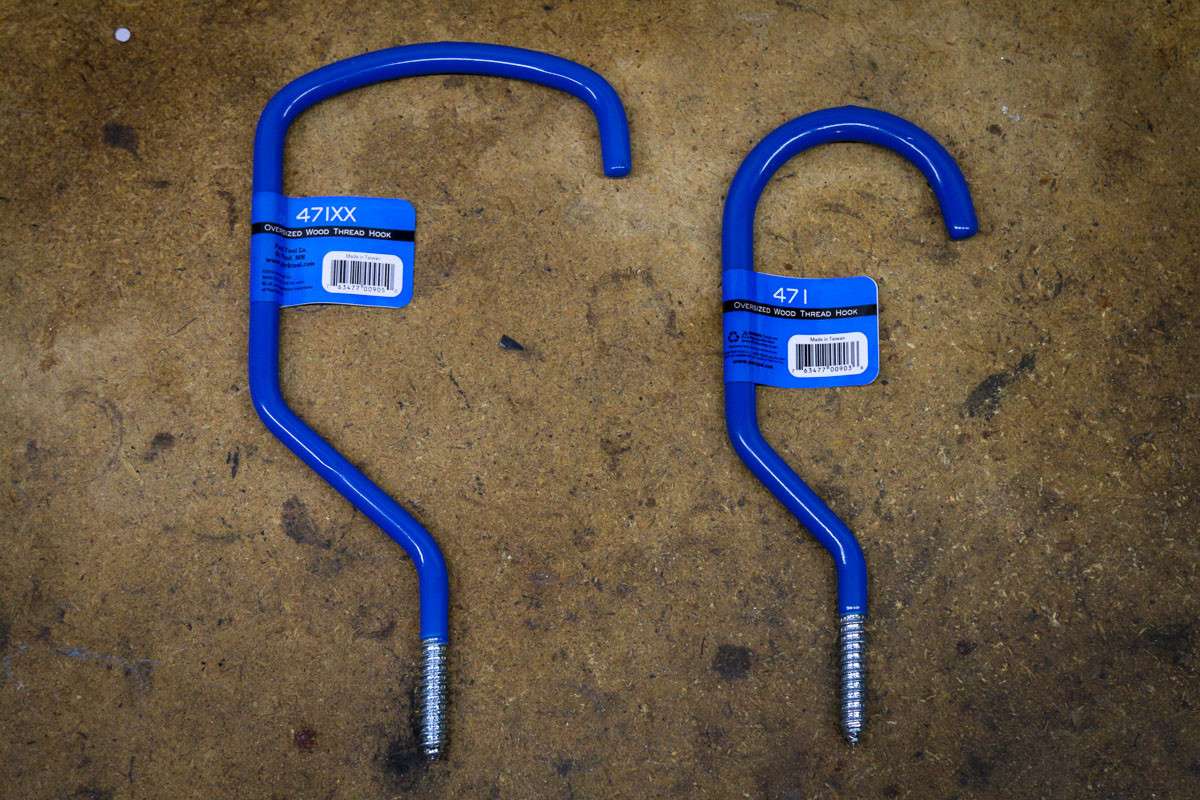 Park Took 471 471XX bicycle storage hooks](Park Tool 471XX and 471 bicycle storage hooks)
Park Took 471 471XX bicycle storage hooks](Park Tool 471XX and 471 bicycle storage hooks)
While basic hooks from your local hardware store can get the job done, Park Tool offers a range of bike-specific hooks designed with enhanced features and durability. Park Tool hooks come in different thread types and sizes to suit various mounting surfaces and bike types.
[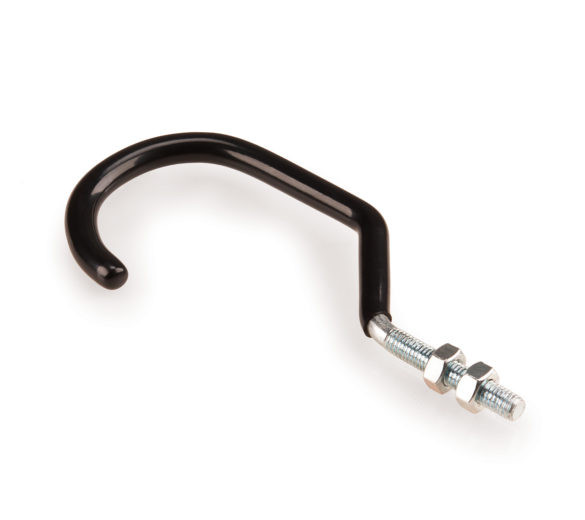 Park Took bicycle storage hook with machine thread](Park Tool machine thread bicycle storage hook)
Park Took bicycle storage hook with machine thread](Park Tool machine thread bicycle storage hook)
Park Tool offers both wood thread hooks, designed to screw directly into wood joists after drilling a pilot hole, and machine thread hooks for metal surfaces. The machine thread hooks are identifiable by their black vinyl coating.
[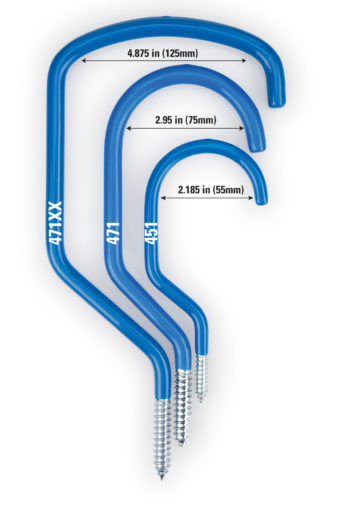 Bicycle storage hook sizes park tool regular MTB fat bike](Park Tool bicycle storage hook sizes)
Bicycle storage hook sizes park tool regular MTB fat bike](Park Tool bicycle storage hook sizes)
Their hook sizes range from the 451, suitable for narrow road bike tires, to the 471, ideal for mountain bikes and plus bikes, and the 471XX, designed to accommodate fat bike tires. While larger hooks can be used for smaller tires, the 471 offers versatility for most bikes, making it a practical choice for mixed bike collections.
[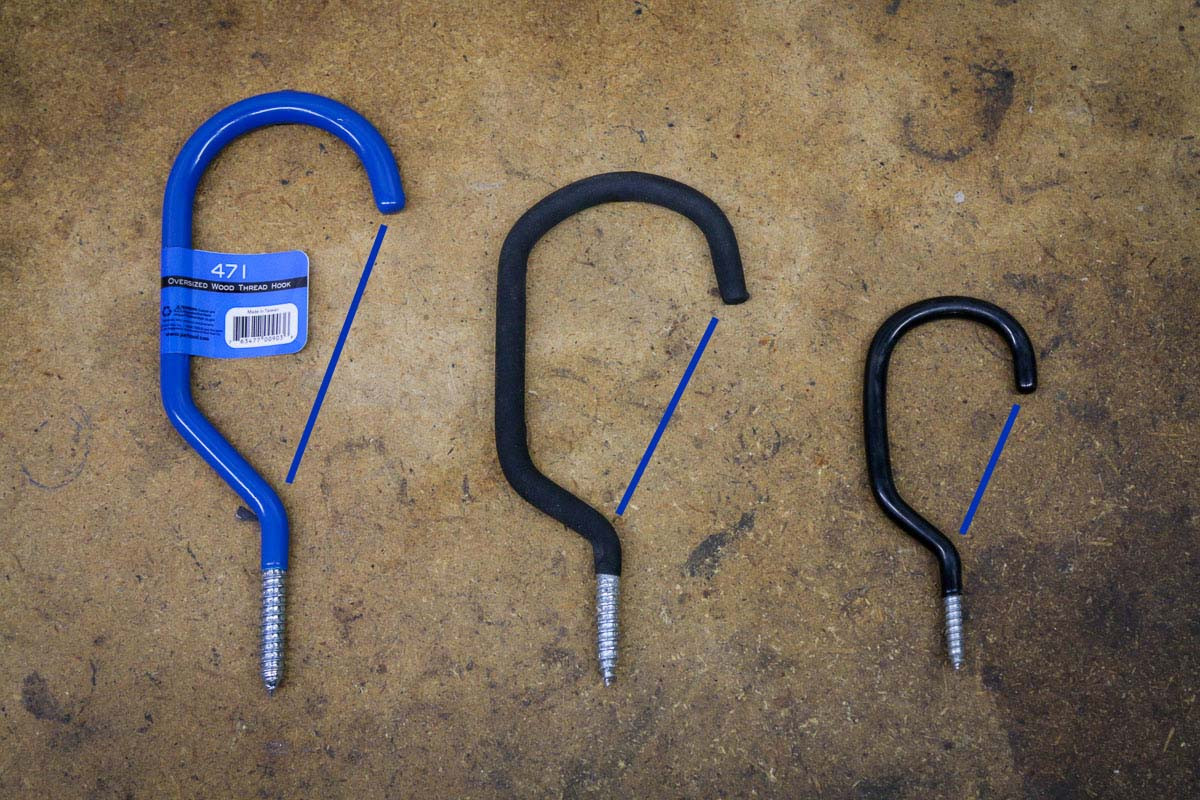 Park Tool Storage hook benefits](Park Tool Storage hook benefits)
Park Tool Storage hook benefits](Park Tool Storage hook benefits)
One key differentiator of Park Tool hooks is the wider opening and deeper curve from the hook tip to the shoulder. This design makes it significantly easier to guide tires, especially those with larger volumes and aggressive tread, into the hook. Generic hooks often have a shallower gap, requiring you to tilt the wheel awkwardly to engage the rim with the hook, particularly challenging when reaching for ceiling-mounted hooks.
[ ](Park Tool bicycle storage hooks ease of use)
](Park Tool bicycle storage hooks ease of use)
Furthermore, hooks intended for ladders and general hardware often have a flat bottom, which can concentrate pressure on a small area of the rim and potentially damage the vinyl coating over time, especially with heavier bikes.
[ Storage hooks for fat bikes](Storage hooks for fat bikes)
Storage hooks for fat bikes](Storage hooks for fat bikes)
Park Tool 470/471XX hooks feature a curved bottom, providing a larger contact area and distributing weight more evenly across the rim, reducing the risk of damage and wear to the protective vinyl coating.
[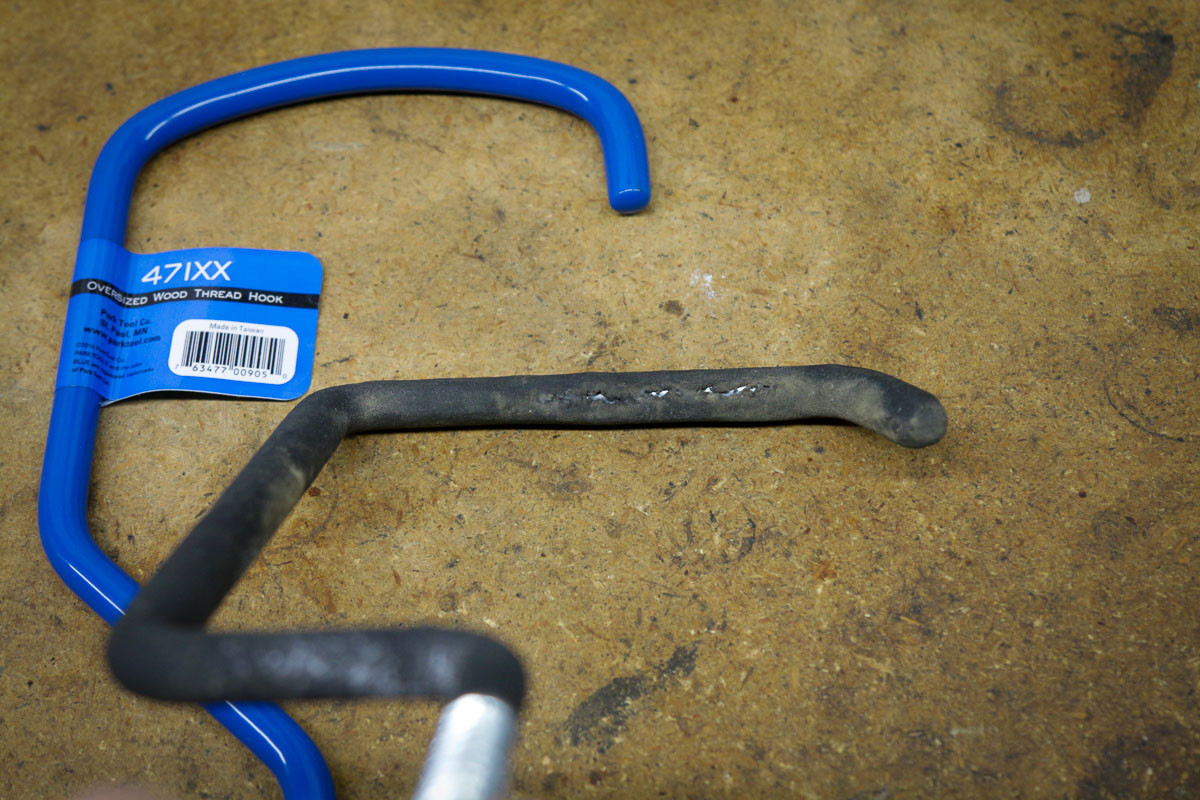 Ladder hook issues for fat bikes](Ladder hook issues for fat bikes)
Ladder hook issues for fat bikes](Ladder hook issues for fat bikes)
[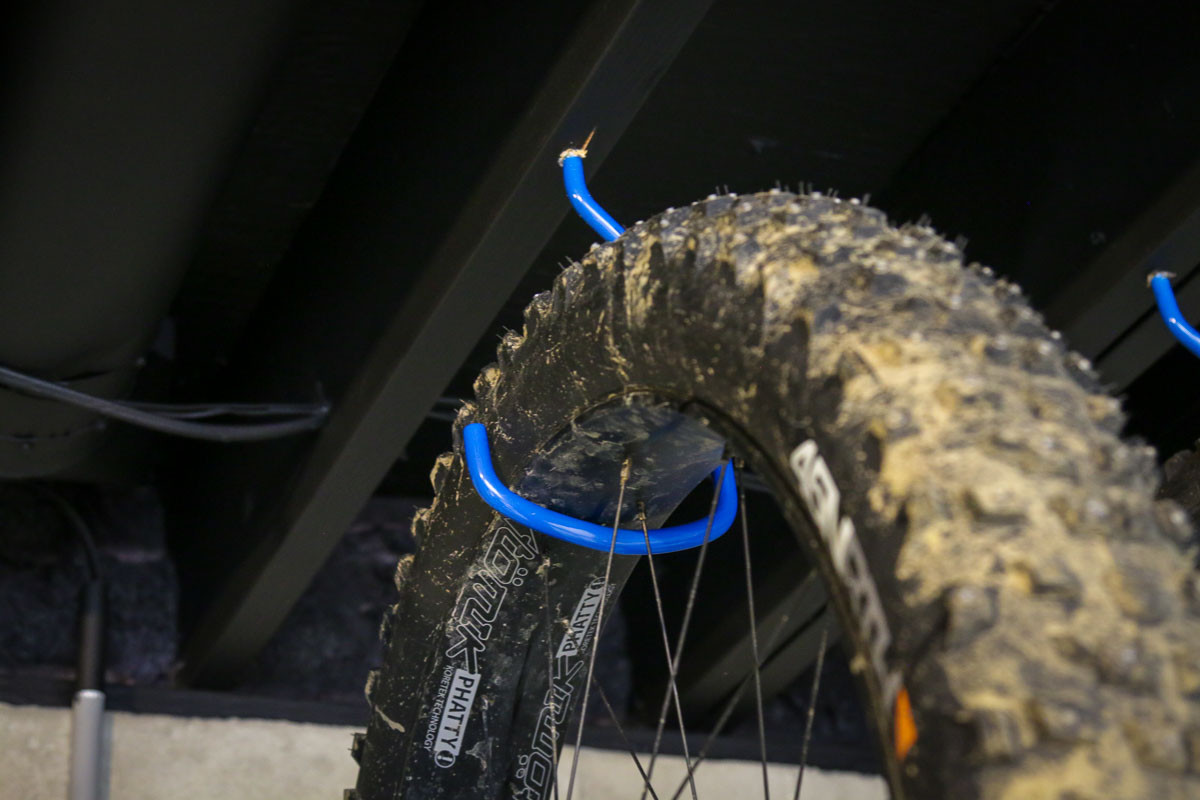 carbon fat bike rim on hook](Carbon fat bike rim on hook)
carbon fat bike rim on hook](Carbon fat bike rim on hook)
Pricing and Final Verdict
[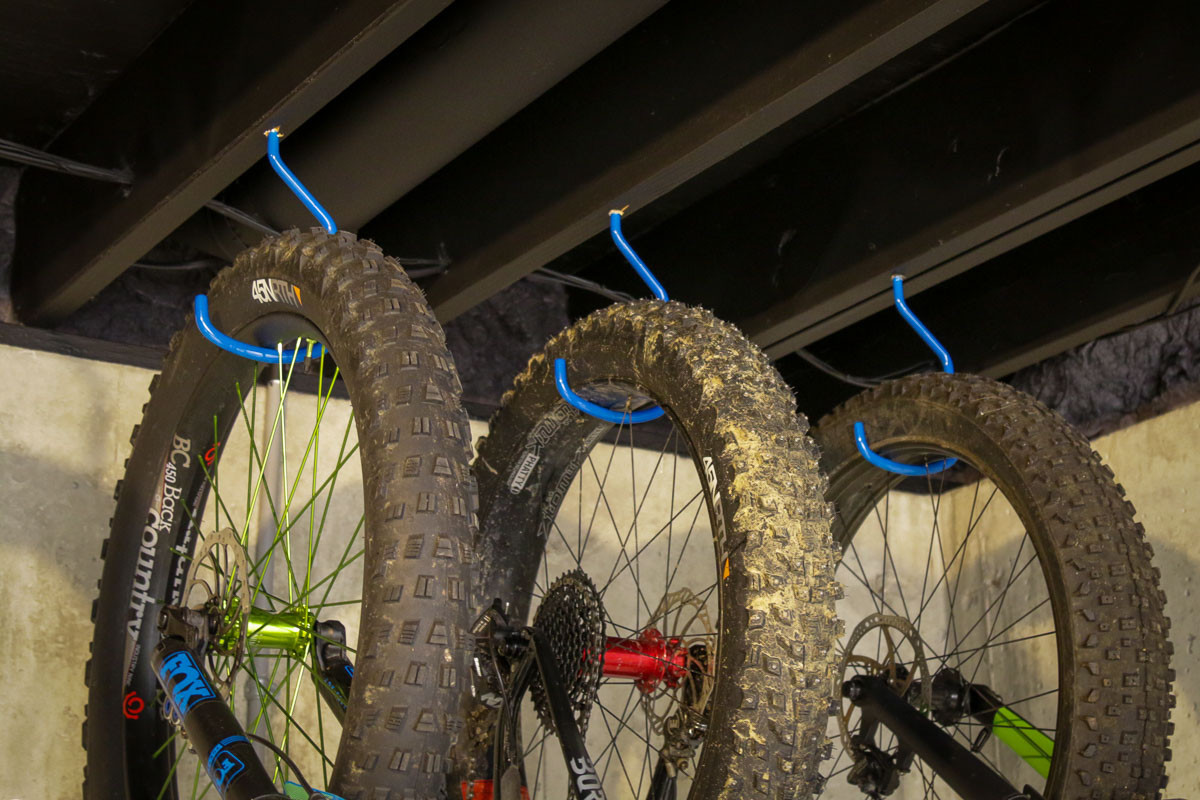 Fat Bike Storage with Park Tool 471XX](Fat Bike Storage with Park Tool 471XX)
Fat Bike Storage with Park Tool 471XX](Fat Bike Storage with Park Tool 471XX)
While Park Tool hooks are pricier than basic hardware store hooks, the investment is justifiable for serious cyclists. Priced at $5.45/$5.95/$8.95 for the 451/471/471XX models respectively, they represent a relatively small cost for significantly improved ease of use, bike protection, and durability compared to generic hooks. When compared to more elaborate bike storage solutions, Park Tool hooks remain a very economical option.
Ultimately, hanging your bike from the ceiling with hooks is a smart space-saving strategy. For optimal performance and peace of mind, especially with valuable bikes and wider tires, upgrading to Park Tool bike-specific hooks is a worthwhile investment. They offer enhanced design features that simplify bike loading and unloading, provide better rim protection, and add a touch of professional-grade organization to your storage space.


